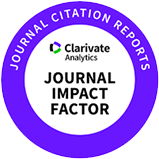Endogenous phosphorus losses and standardized ileal digestibility of phosphorus in layer hens fed purified diets with diverse phosphorus sources
Abstract
This study aimed to measure the endogenous losses, the apparent (AID), and the standard ileal digestibility (SID) of phosphorus (P) using a diet containing corn, soybean meal, and wheat bran in 45-week-old Hy-line Brown laying hens. Hens were fed experimental diets containing inorganic phosphate supplements and plant-based phosphorus sources. Experimental diets included: (i) inorganic phosphate supplements (monocalcium phosphate [MCP], dicalcium phosphate [DCP], monosodium phosphate [MSP]); (ii) plant-based phosphorus sources (corn [CRN], soybean meal [SBM], and wheat bran [WB]); and (iii) a phosphorus-free diet [P-free]. Measurements were collected from the ileum and excreta over three days with six replicates per dietary treatment and four hens per cage, under <italic>ad libitum</italic> feeding conditions. The study demonstrated interactions (<italic>p</italic> < 0.05) between diet type and sampling locations on endogenous phosphorus losses. Higher endogenous phosphorus losses (<italic>p</italic> < 0.05) were observed in the excreta of hens fed P-free, MCP, DCP, MSP, and WB diets. Increased endogenous P losses in the ileum (<italic>p</italic> < 0.05) were noted in hens-fed CRN, SBM, and WB diets compared to inorganic phosphate supplement diets. The AID and SID of P were significantly lower (<italic>p</italic> < 0.05) in the CRN diet compared to SBM, WB, MCP, DCP, and MSP diets. Among inorganic phosphate supplements, MCP exhibited the highest SID of P, while for plant-based sources, SBM and WB demonstrated higher SID values than CRN. The AID of P was higher (<italic>p</italic> < 0.05) in hens fed the MCP diet compared to SBM and WB diets, but diet type did not affect the AID of dry matter (<italic>p</italic> > 0.05). In conclusion, diet type and sampling location influence endogenous P losses in laying hens, with differences between ileal and excreta measurements. The results highlight the variability in P bioavailability among plant-based and inorganic phosphorus sources, emphasizing the need to account for ingredient-specific P digestibility when formulating diets for optimal P utilization.
















